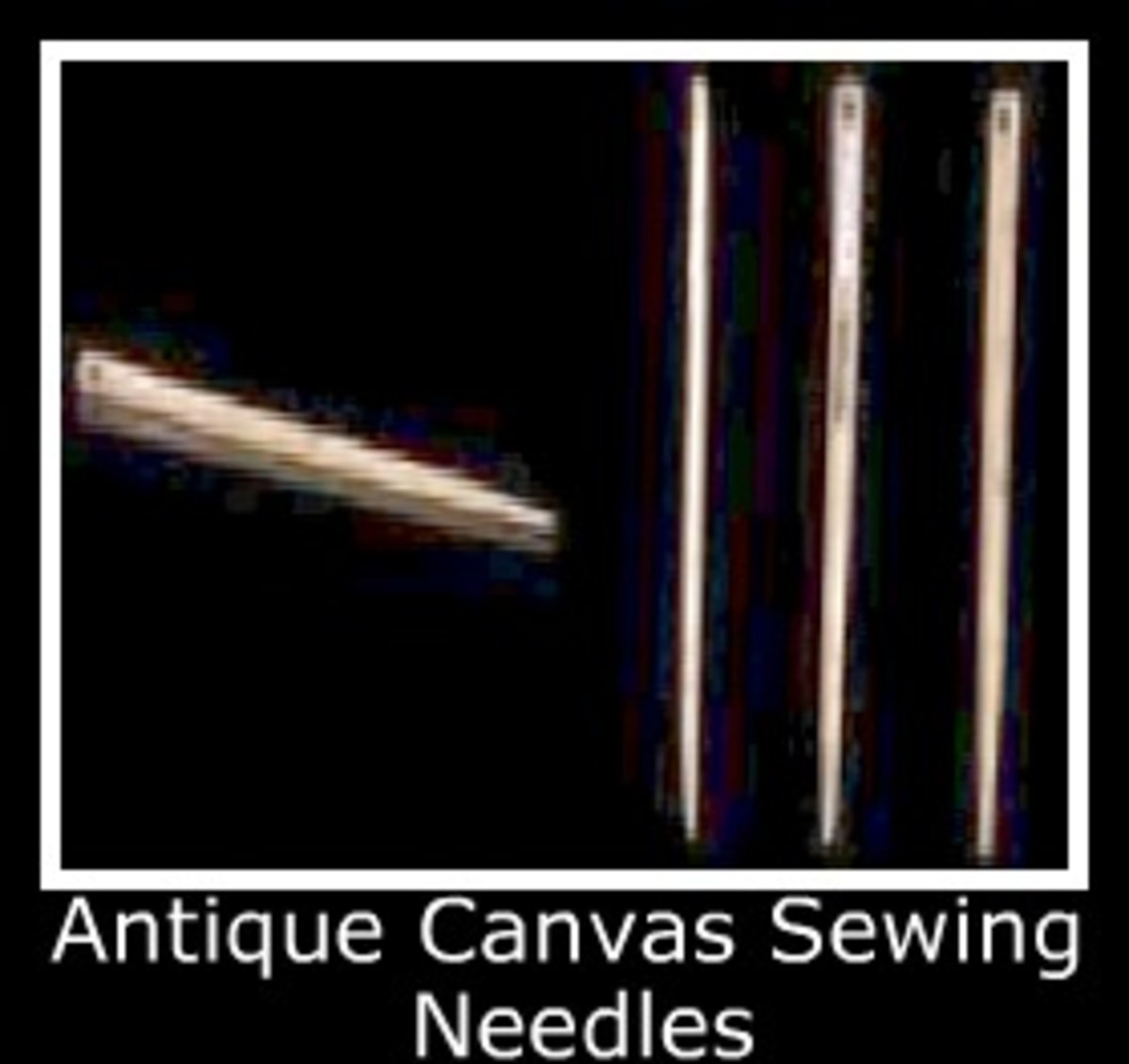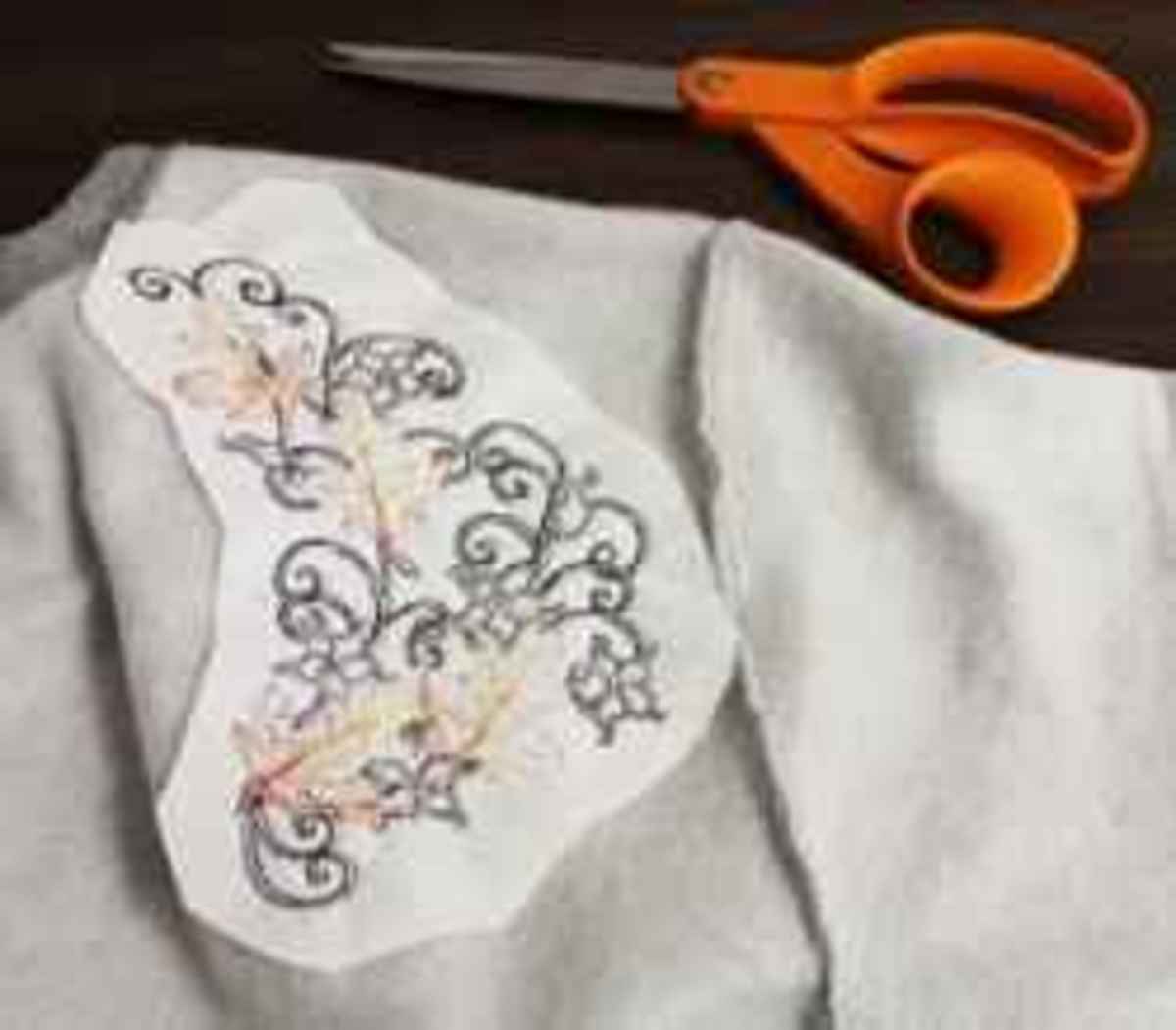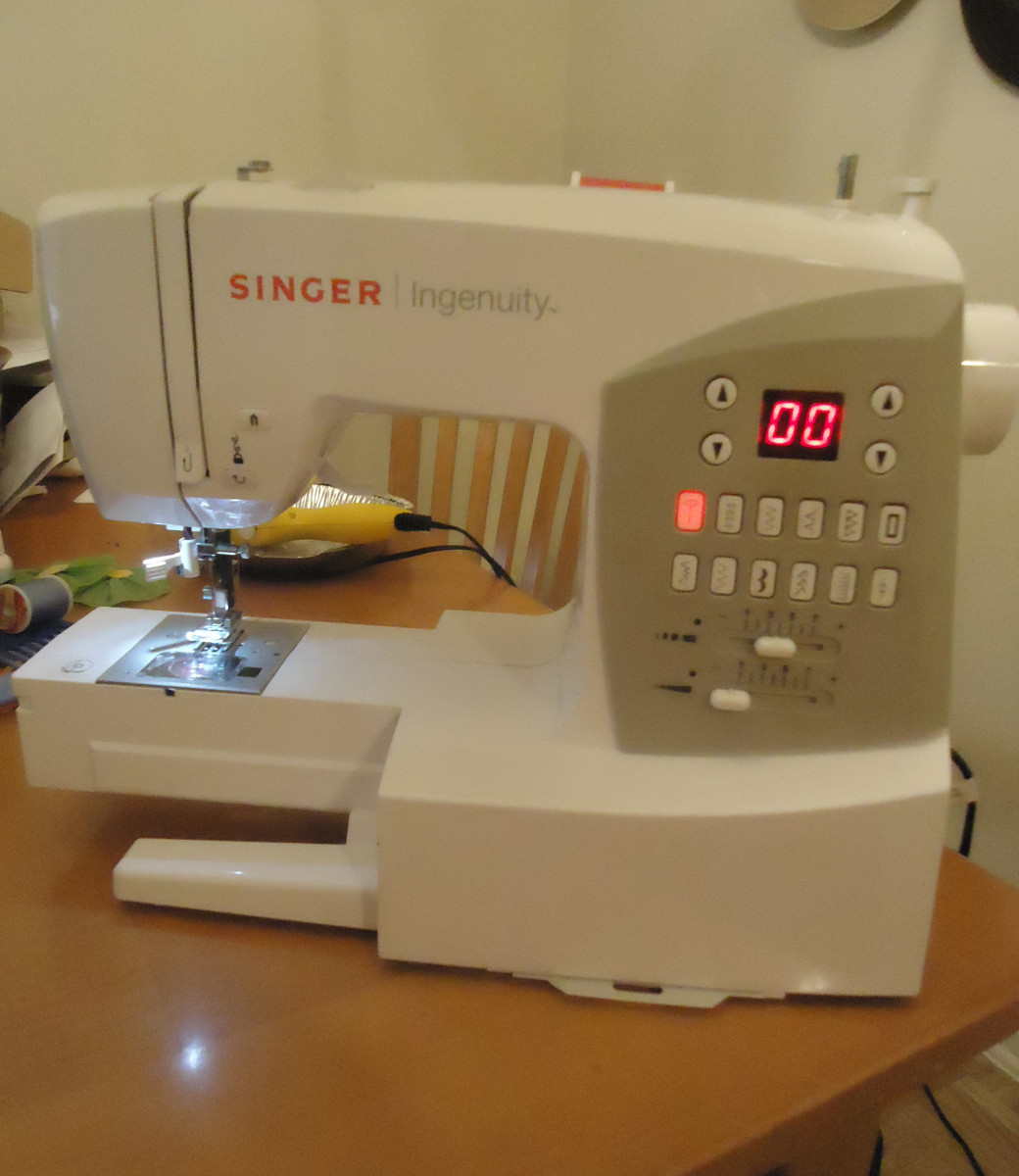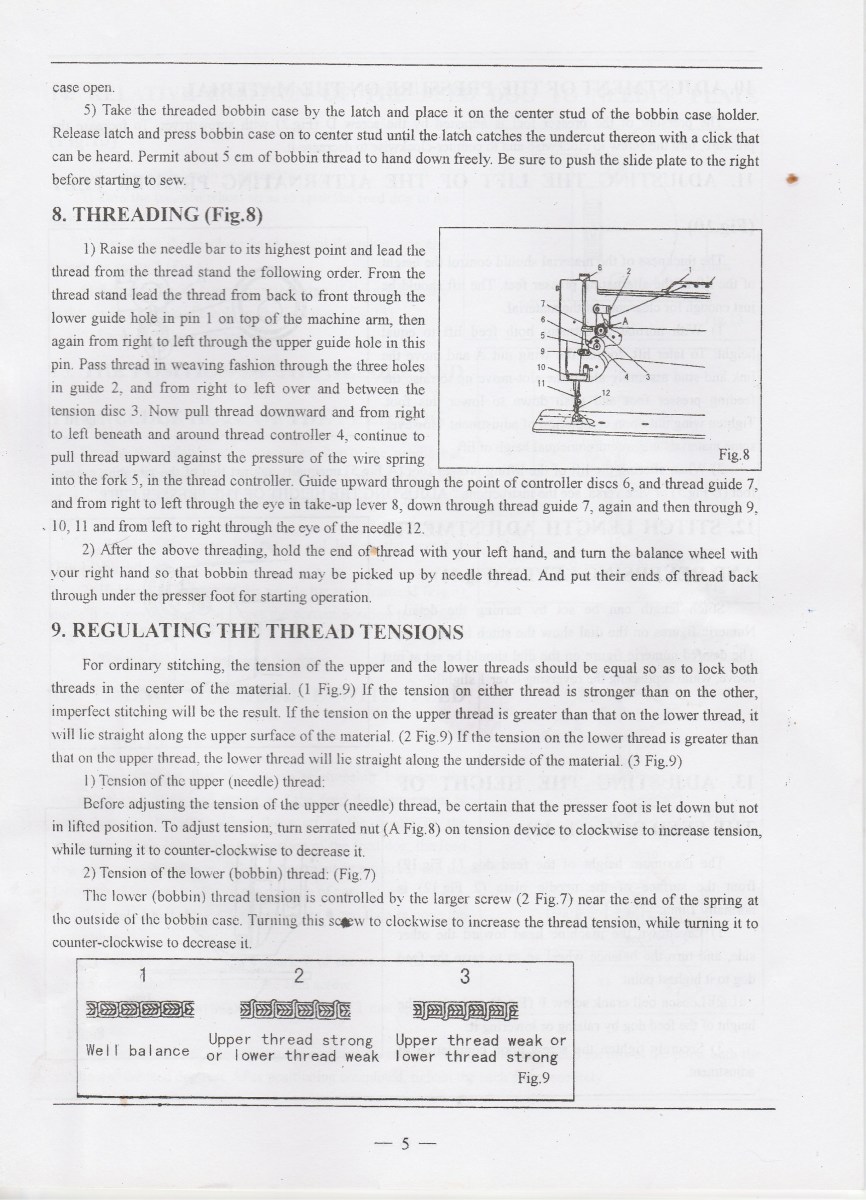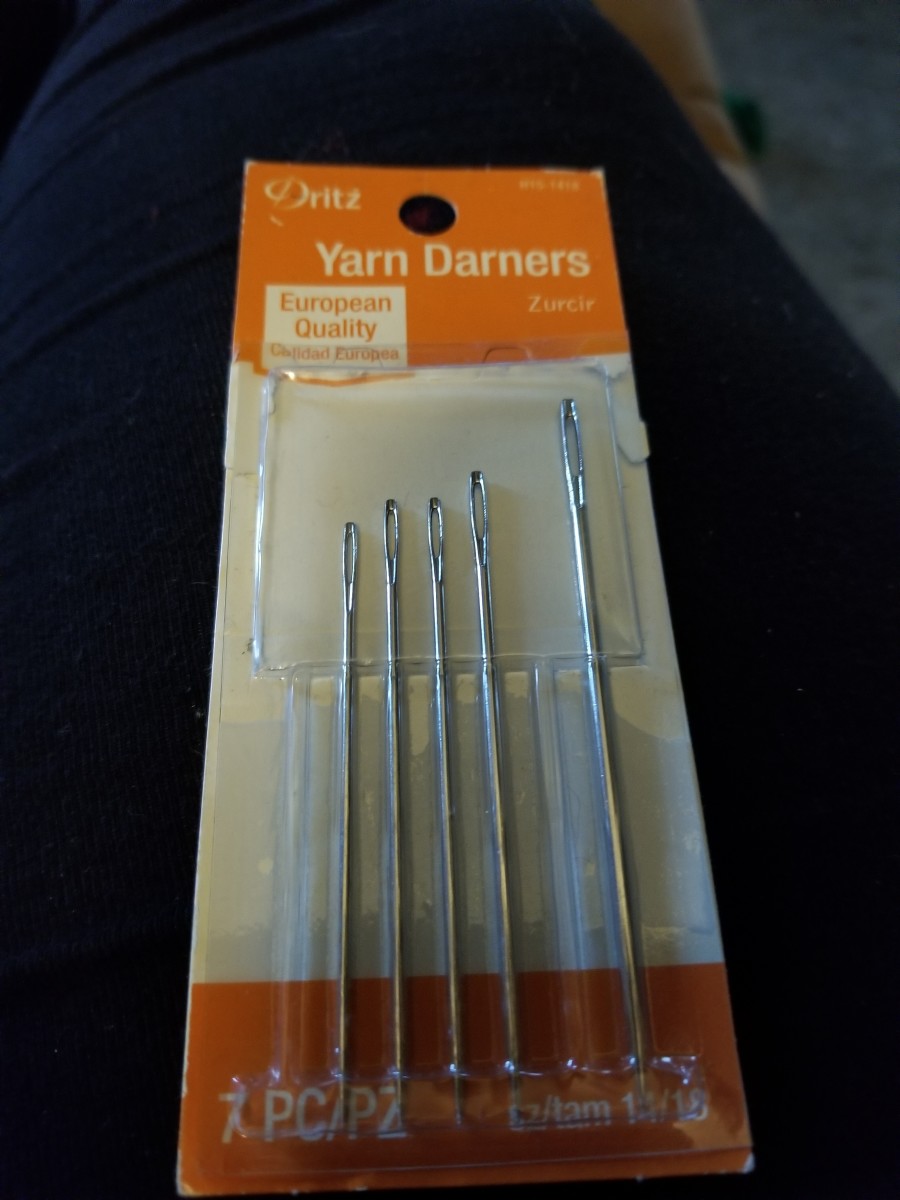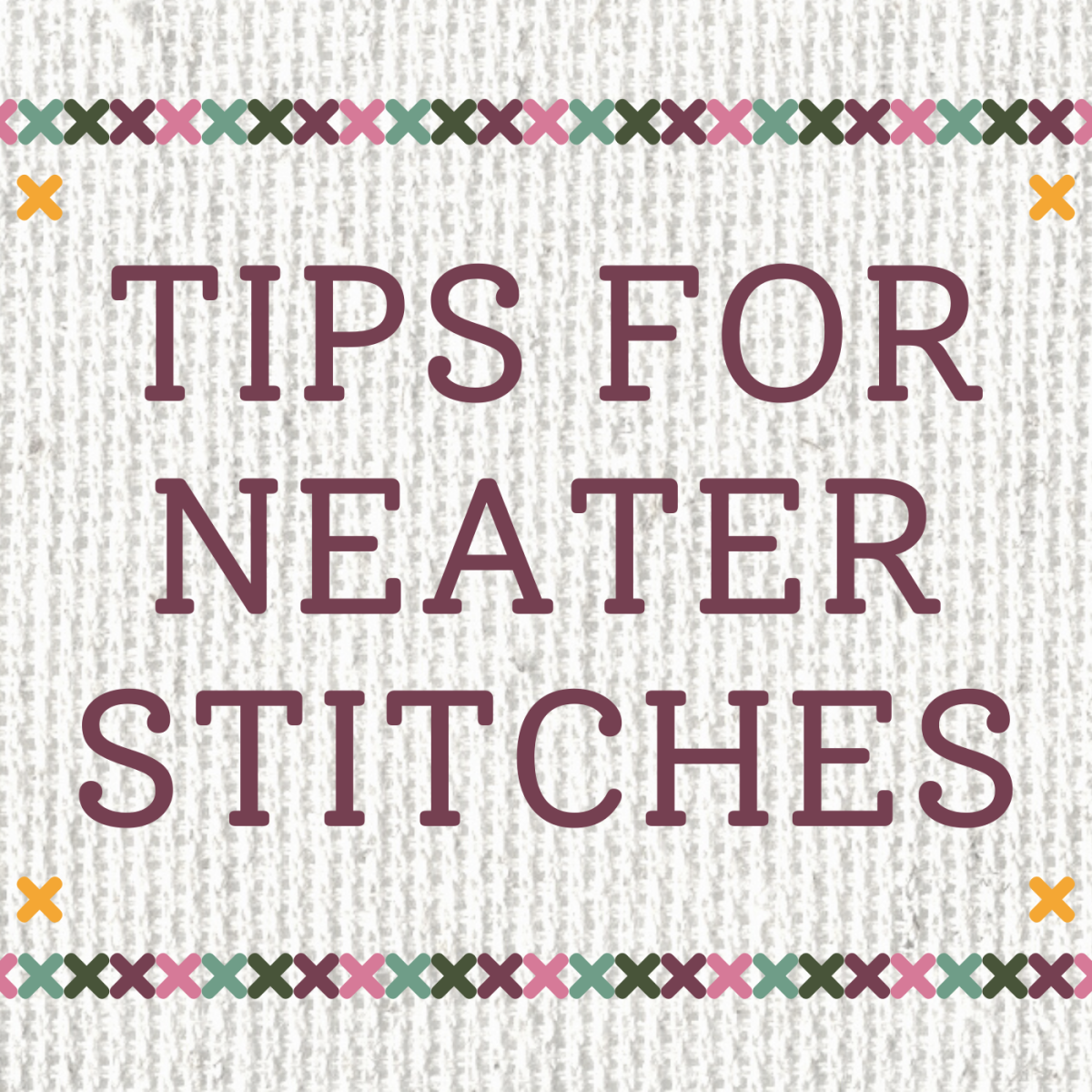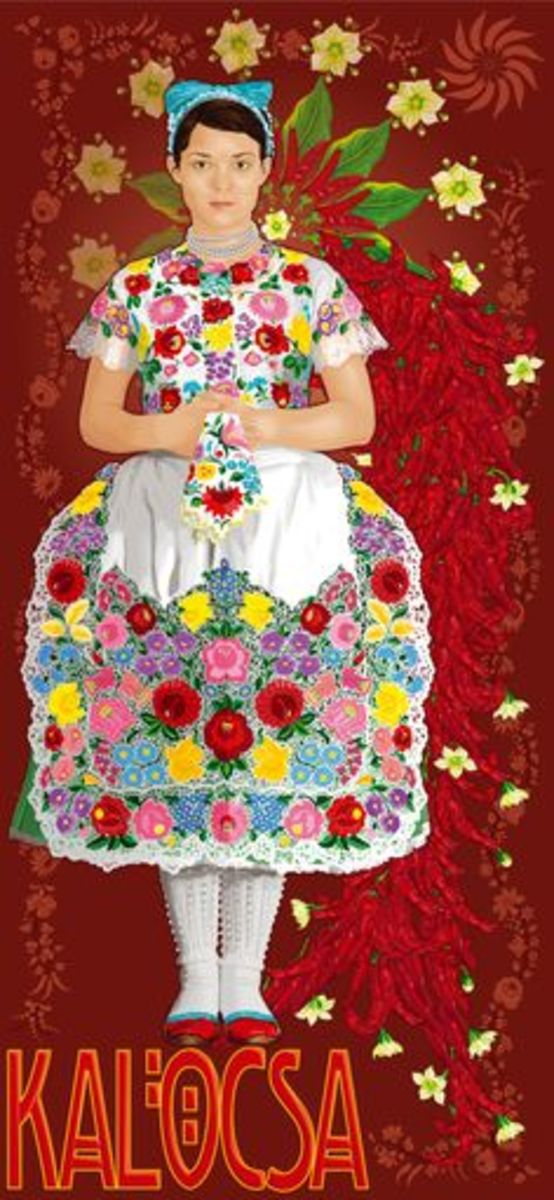- HubPages»
- Arts and Design»
- Crafts & Handiwork»
- Textiles»
- Embroidery
Using Metallic Thread in Machine Embroidery
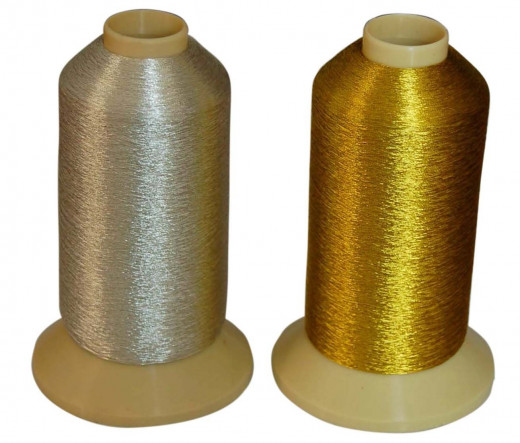
The most frustrating thing about using metallic thread in embroidery is the looping and twisting at the top of the thread path when it comes off of the cone. There are several ways to stop this from happening. Try any of the following and there should be at least one suggestion that will help resolve your looping problem:
- Try a thread net to cover the cone. Be sure the net is long enough to tuck up under the cone, which will prevent the thread from falling off and catching under the cone. The net should also extend to the top of the cone. When using this method you may have to adjust your tensions to make up for the "hold" the sock puts on the thread.
- Set the cone on the floor behind the machine, or, if room permits, on the back of the machine. This gives the thread time to unwind and straighten out before it starts through the thread path. Another version of this is to hang the cones on the wall behind the machine. If given enough distance (three to four feet works best) the thread comes off smoothly and stops looping.
- Place a disposable plastic or paper cup over the cone. Put a very small hole in the top and pull the thread through it. Do not make the hole too big. Large holes defeat the purpose.
- Cut a plastic drinking straw in half and tape it to the thread rack close to the thread guide. Drop the thread already on the machine down through the straw and tie the metallic thread onto it and pull the metallic thread up through the straw and down through the thread path. This keeps the metallic thread from twisting and looping.
Working with Thread Tension
Don't look for problems that aren't there. By this, don't start adjusting knobs just because you have them. Just because someone else says they do it a certain way, you don't have to follow suit. When using metallic thread, run a sample and check to see what tensions need adjusting. While the sample is running, see how fast the thread is coming off of the cone. Thread that comes off too fast can cause problems down the thread path. You may want to make the first adjustment at the top and slow it down.
Depending on the machine you are running, you will have one or two more tension adjustments you could make. If the thread is looping on the design, try a slight turn to tighten at the bottom tension where the check-spring is. If the bobbin pulls up through the design, loosen that tension a little. You should leave the bobbin tension alone for as long as you can. Once you move the bobbin tension, the rest of the needles on that head will sew differently.
One thing many people overlook when having difficulty with metallic thread is the digitizing. Since metallic thread doesn't sew tiny stitches well, your digitizer needs to know when you plan on using this type of thread in your design.
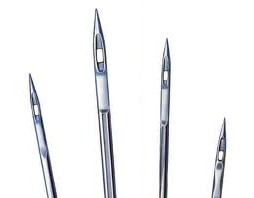
Getting a Better Understanding
Understanding how metallic thread is constructed will help you understand why it takes a little special attention. First, what is the center or the base of the thread made of? Most metallic threads have a nylon center coated with metal or aluminum. Different manufacturers use different amounts of metal or aluminum to coat the nylon. Some brands wrap rice paper around the nylon center before coating it with the metal or aluminum. The finish can be done several different ways. Some companies' thread is finished after the initial coating. Other companies add one- or two-coat finishes like that on rayon thread. In the case of metallic thread, more is better. The two-coat finish makes the thread softer, allowing it to flow through the thread path smoother. The advantage of softer thread is that it is less likely to twist or loop coming off of the cone.
Choosing the proper needle is crucial when working with metallic thread. A DBX7ST 80/12 works best for many embroiderers. The eye has a rectangular shape, which allows the thread to flow smoother.
Spools are available in 165 yards, 500 yards, 750 yards and 1,000 yards. Cone sizes start at 5,000 yards and go up to 5,500, 10,000 (or 250 grams) and 12,900 yards. So you don't have to buy a large quantity of a color if you don't need it. Metallic thread also comes in different weights. The most popular size is 40 weight, but you can use other sizes on a commercial embroidery machine. The available weights are 30, 40 and 50. Some companies even offer two- and three-ply metallic thread. If you want to really get ambitious, try one of the decorative threads like Supertwist or Sliver. Metallic thread is offered in several colors, including red, royal, green, copper, pink and lavender. Some companies have more than 20 different colors, including multi-colors. Imagine the fun you could have creating wonderful designs without worrying about ending up with a mess on your hands.
There are plenty of companies that offer metallic thread. Many will be happy to supply you with a sample for testing. It's also a good idea to pick up some samples the next time you attend a trade show. After awhile, you'll have enough samples for a test of your own.
There are a few negative things about metallic thread. The most common complaint is that the underside is scratchy against the skin. To solve this problem, try clipping the excess thread from the tie-off. Be sure not to get too close or the knot will come out. You can also heat-seal a small piece of heat sensitive backing over the back of the stitching. Stitching metallic thread on to constructed caps is yet another challenge. Slowing down the machine is the best way to handle this. Also, make sure the design is digitized for caps and metallic thread.
Just like anything you do, plan ahead and make sure everything is going to work before you start a project. Sew samples and get the machine set with the proper needles and tensions then go for it! Stitch up a glittering storm of dazzling designs.
Links
- Contract Embroidery
Wholesale embroidery and DTG printing for industry professionals, marketing companies and distributors. - The Embroidery Business
A blog about commercial embroidery

